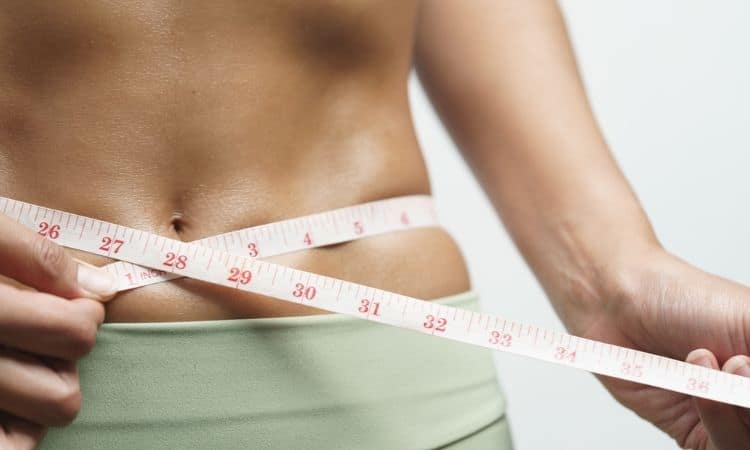In the realm of health and fitness, weight often takes center stage. We step on the scale, hoping for a lower number, believing it directly reflects our overall well-being. But what if weight alone doesn’t tell the whole story? Understanding body composition goes beyond the numbers on the scale and provides a clearer picture of health. Let’s delve into body composition, exploring its components, measurement methods, and its significance for our health and fitness goals.
Get personalized insights with a body composition test in New York.

Introduction to Body Composition
Defining Body Composition:
Body composition refers to the breakdown of the body’s mass into various components, primarily fat, muscle, bone, and water. It provides a more comprehensive understanding of health than body weight alone by revealing the proportions of these essential elements.
Importance of Body Composition in Health and Fitness:
Body composition is pivotal in determining overall health and fitness. A healthy body composition generally includes a lower percentage of body fat, a higher percentage of lean body mass (muscle and bone), and adequate water content. This balance is crucial for optimal physical function, disease prevention, and achieving fitness goals.
Differences Between Body Weight and Body Composition:
While body weight is a useful tool for tracking progress, it doesn’t distinguish between fat and muscle. Two individuals with the same weight can have vastly different body compositions. One might have a higher percentage of body fat, while the other has more lean body mass. This distinction is crucial for understanding true health and fitness.
Key Components of Body Composition
Body Fat Percentage:
Body fat percentage represents the proportion of an individual’s total body weight that is composed of fat tissue. It is a crucial indicator of overall health, as excessive body fat is linked to an increased risk of various health issues, including heart disease, diabetes, and certain types of cancer.
Lean Body Mass:
Lean body mass includes the non-fat components of the body, such as muscles, bones, organs, and connective tissues. It plays a vital role in metabolism, strength, and overall physical function. A higher percentage of lean body mass contributes to a healthier and more active lifestyle.
Bone Density:
Bone density refers to the mineral content of bones, determining their strength and resilience. Adequate bone density is essential for preventing osteoporosis, fractures, and other skeletal issues.
Water Content:
Water makes up approximately 60% of an adult’s body weight and is crucial for various bodily functions, including temperature regulation, nutrient transport, and waste removal. Proper hydration is essential for maintaining a healthy water content and overall well-being.
Methods of Measuring Body Composition
Bioelectrical Impedance Analysis (BIA):
BIA is a non-invasive method that measures body composition by passing a low-frequency electrical current through the body. It estimates body fat percentage based on the resistance of different tissues to the current.
Dual-Energy X-ray Absorptiometry (DEXA):
DEXA is considered the gold standard for measuring body composition, providing highly accurate measurements of body fat, lean body mass, and bone mineral density. It uses dual X-ray beams to assess bone and soft tissue density.
Skinfold Measurements:
Skinfold measurements involve using calipers to pinch and measure the thickness of skin folds at various body sites. These measurements are then used to estimate body fat percentage using established formulas.
Hydrostatic Weighing:
Hydrostatic weighing involves underwater weighing to determine body density. Based on the principle that body fat is less dense than water, body fat percentage can be calculated using the individual’s weight in water and air.
Air Displacement Plethysmography (Bod Pod):
Air displacement plethysmography, also known as Bod Pod, utilizes a sealed chamber to measure body volume. By comparing the volume of air displaced by the body to the volume of air displaced by a known volume, body fat percentage can be determined.
Why Measure Body Composition?
Benefits of Knowing Body Composition for Overall Health:
Measuring body composition provides valuable insights into an individual’s overall health and fitness status. It can help:
- Identify potential health risks: High body fat percentage is associated with an increased risk of various health issues, while low bone density can lead to osteoporosis.
- Set personalized fitness goals: Understanding body composition allows for setting realistic and achievable goals for weight loss, muscle gain, and overall body improvement.
- Track progress: Regularly measuring body composition allows for monitoring progress and making adjustments to exercise and nutrition plans as needed.
Use in Disease Risk Assessment:
Body composition plays a significant role in assessing the risk of developing various chronic diseases, including:
- Obesity: Excess body fat, particularly abdominal fat, is a major risk factor for obesity-related diseases such as heart disease, type 2 diabetes, and certain cancers.
- Osteoporosis: Monitoring bone density helps in the early detection and prevention of osteoporosis.
- Cardiovascular diseases: A healthy body composition with lower body fat percentage and higher lean mass reduces the risk of cardiovascular diseases.
Conclusion: The Importance of Body Composition Analysis
Understanding body composition is essential for achieving and maintaining optimal health and fitness. It provides a clearer picture of overall health than body weight alone, helping to identify potential health risks, set personalized fitness goals, and track progress effectively. Incorporating regular body composition analysis into your health routine can lead to better health outcomes and a more informed approach to fitness and wellness.